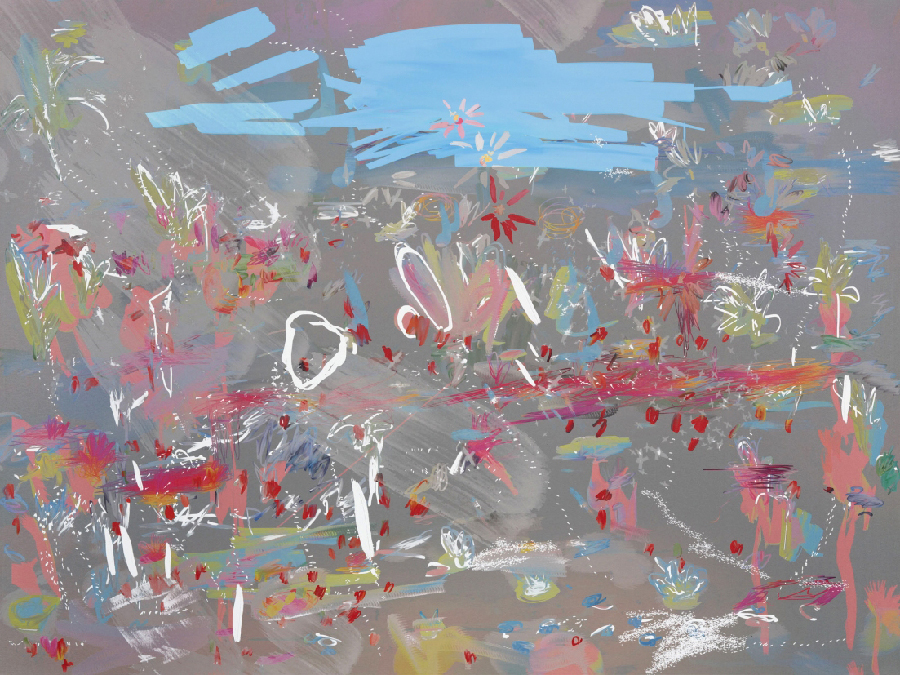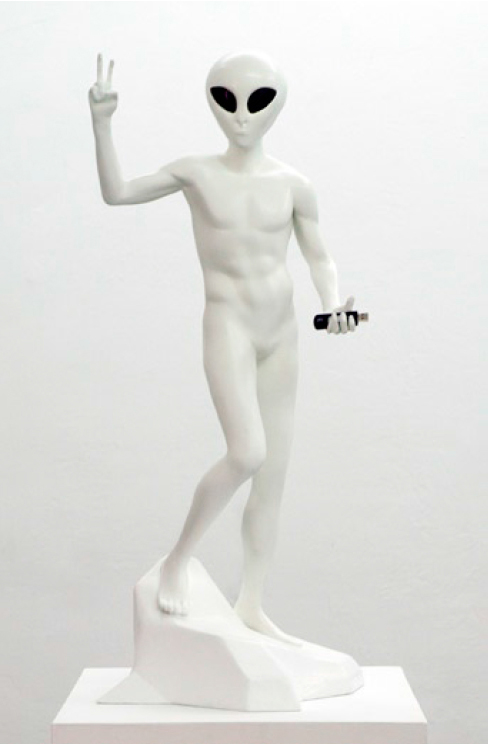Profile of the Collector: Hampus Lindwall
by Dominique Moulon
Hampus Lindwall is a contemporary art collector — what makes him stand out is his collection, which consists primarily of artworks that engage digital practices or culture.
Dominique Moulon: You own URL artworks that are very fortunately accessible to all online, but then how do you claim any sort of ownership?
Hampus Lindwall: When you buy a URL artwork, i.e. an online artwork, there is a contract that binds the collector to the piece. This means that as a collector you are responsible for this piece, for maintaining it online and making it accessible to everyone. So every year, I need to pay the hosting fee to keep it online. I also have a certificate stating that I own the piece, and it’s also mentioned in the title of the tab when the page is accessed. It says “Collection of Hampus Lindwall”, followed by the name of the artwork. I believe it was Rafaël Rozendaal who said that it was like owning a sculpture in a park. Here, the park is the Internet, and there are annual fees. So it’s a bit like going to clean it every week. And when you buy a sculpture in a park, you want it to be surrounded by as many people as possible, so today, that place is on the Internet. fallingfalling.com, which is my most viewed piece, gets 4.5 million visitors a year ! What other artworks get that kind of exposure?
DM: I believe the protocol to which you’re referring is linked to a contract created by Rafaël Rozendaal himself, who put it on his own website, alongside all the other URL artworks!
HL: It may not be an artwork, but it is an Open Source document, which means that anyone can use the contract to sell an online art piece under the same or modified conditions. Speaking of which, when I bought a website from another artist, we used this same contract, modifying only a few details.
DM: So that means that this contract can be used and even modified by both artists and collectors?
HL: Yes, absolutely.

DM: Do you have in your collection any pieces of variable media that have stopped “working”, if an artwork can be described as such ? And what did you do in that case?
HL: Yes, it does happen sometimes. There are problems with the operating systems. For example, one day, one of my pieces didn’t launch automatically as it was supposed to after the latest update from Apple, so I had to contact the artist so that he could modify the source code. It also happened another time with a Flash website that didn’t work on smartphones, so we had to develop another version that was compatible with devices that can’t read Flash.
DM: I noticed that you sometimes say “we”, when referring to the artists that you accompany. Does this mean that you sometimes produce an artist’s work or series?
HL: Yes, on more than one occasion. I think this kind of support from a collector is important. Of course, it doesn’t compare with what an institution could do. But because this is my own investment, as opposed to public funding, I can support any project that I want, however crazy (laughs).
DM: What do you think are the most notable differences between building your personal collection and curating a group exhibition?
HL: A personal collection stays with you throughout your lifetime, while a temporary exhibition exists for a decidedly shorter time frame. I started my collection in 2005 by acquiring very contemporary works—works that were made with new media or new technologies and that had something to say about the world we live in today. By building on this collection, I’m constituting a sort of time capsule that is representative of our time. But this personal collection also depends on my travels and encounters, whereas I imagine that the curator of an exhibition in an institution must go beyond this personal aspect. And when I acquire a piece that nobody besides me appreciates, that’s my business. So the time capsule that we’re talking about is also relative to my cultures, my tastes.

DM: However, you have curated a few exhibitions, if I’m not mistaken.
HL: Yes, I have curated several shows, but never group exhibitions. They were always solo shows, where my role was more about exchanging with artists who trusted me to the point that they would discuss ideas to get feedback.
DM: Where do you usually find the artworks or trends that most interest you—on the Internet, at art fairs, in galleries or studios?
HL: Mostly through other artists. I’m a musician, and artists introduce me to other artists, saying things like “you should see that guy over there, he shares his studio with a friend” or “you should see this or that…” So it’s by word-of-mouth and especially through the artists themselves. Then I also go to a lot of fairs and galleries, especially minor art fairs. Because in the big fairs, you see basically the same galleries, with pretty much the same artists, and finally, almost always the same artworks. So it’s mostly in the more “local” fairs that I find things that I don’t know anything about, but which can be very interesting.
DM: Do you part easily with your acquisitions, by exchanging or selling them?
HL: I think I’ve only resold one piece, and it was something that I bought on impulse, but that turned out to be not really what I wanted.
DM: What is your policy on loans?
HL: I loan as much as I can, to institutions, for exhibitions and even to friends. In fact, I don’t have enough space at home to hang all the artworks that I’ve acquired. So pieces from my collection are also at my friends’ places.
DM: What do you believe is the fundamental role of the collector in the contemporary art world?
HL: Collectors should buy artworks, I think (laughs), and when you buy, you contribute in different ways. You contribute by accompanying the artists you like, which allows them to continue working in the direction they choose. But you also contribute to validating certain practices and tendencies, particularly when the artworks are acquired by somewhat respected collectors.
DM: Not to mention collectors who are on the art market for more speculative reasons.
HL: Those people don’t buy what I consider to be contemporary art. Because the artworks that are speculated on in the short term are never the ones of our time.

DM: What kind of relationships do you have with the artists you’ve collected over a period of time?
HL: It’s never the same, with some we discuss art, the world, the economy or the environment, while others are more concerned about the market and want to “position” themselves. Some exchanges are strictly art-related, such as when to end a series so as not to repeat themselves, or about furthering research, or even very practical, pragmatic questions about the production of certain pieces. It can be as simple as choosing the right frame, to “How do we present a digital piece?” or “Can we exhibit it offline or do we have to show it online?” or “Should we present it as a video sequence?”…
DM: The artworks that you collect are by artists who are considered emerging, so still reasonably priced. If the sky was the limit, which artists’ work would you collect?
HL: It’s an interesting question, because I think that if I were unlimited financially, I would collect works by the Italian mannerists. I think about it occasionally, but in reality I’m more interested in our times, and the artists who are around me.